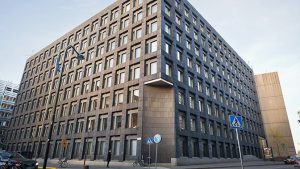Bloomberg
The Riksbank may soon have to abandon its dovish monetary policy and start raising rates in response to inflation overshooting its 2% target, according to Swedbank economists.
The bank’s main scenario is that a first policy rate hike in early next year will be followed by a second one later in 2023. However, there is a risk that price increases will turn out to be higher than forecast, forcing the Riksbank to move already this year, it noted.
The forecast comes as record high inflation has increased doubts about the Swedish central bank’s current plans to leave its key policy rate at zero some time into 2024. In December, the central bank’s target measure, CPIF, rises to 4.1%, which was far higher than the Riksbank had forecast.
“If inflation risks are realised on the upside, the monetary policy tightening is expected to accelerate,†Swedbank’s economists said in the bank’s Economic Outlook report. “The interest rate increase that we foresee in the beginning of 2023 could be brought forward to 2022 and the second increase may come already in the middle of 2023.â€
Swedbank now sees 2021 calendar-adjusted GDP growth of 4.8% versus previous forecast of 4.3%. The bank increased 2022 growth outlook to 3.4% from 3.3% earlier, and 2023 growth seen at 2.2% vs previous forecast of 2.3%.
“The near-term outlook is dampened by the increased spread of coronavirus and by high electricity prices, but these factors but are not expected to leave a long-term impact,†the bank said in a statement.
As Covid restrictions have slowly started to ease, Swedbank expects “household consumption and GDP to increase again in February, in line with previous reopenings,†but says “faster wage growth could become an issue†as an increasing number of businesses are reporting that labour shortages are limiting production.
 The Gulf Time Newspaper One of the finest business newspapers in the UAE brought to you by our professional writers and editors.
The Gulf Time Newspaper One of the finest business newspapers in the UAE brought to you by our professional writers and editors.
